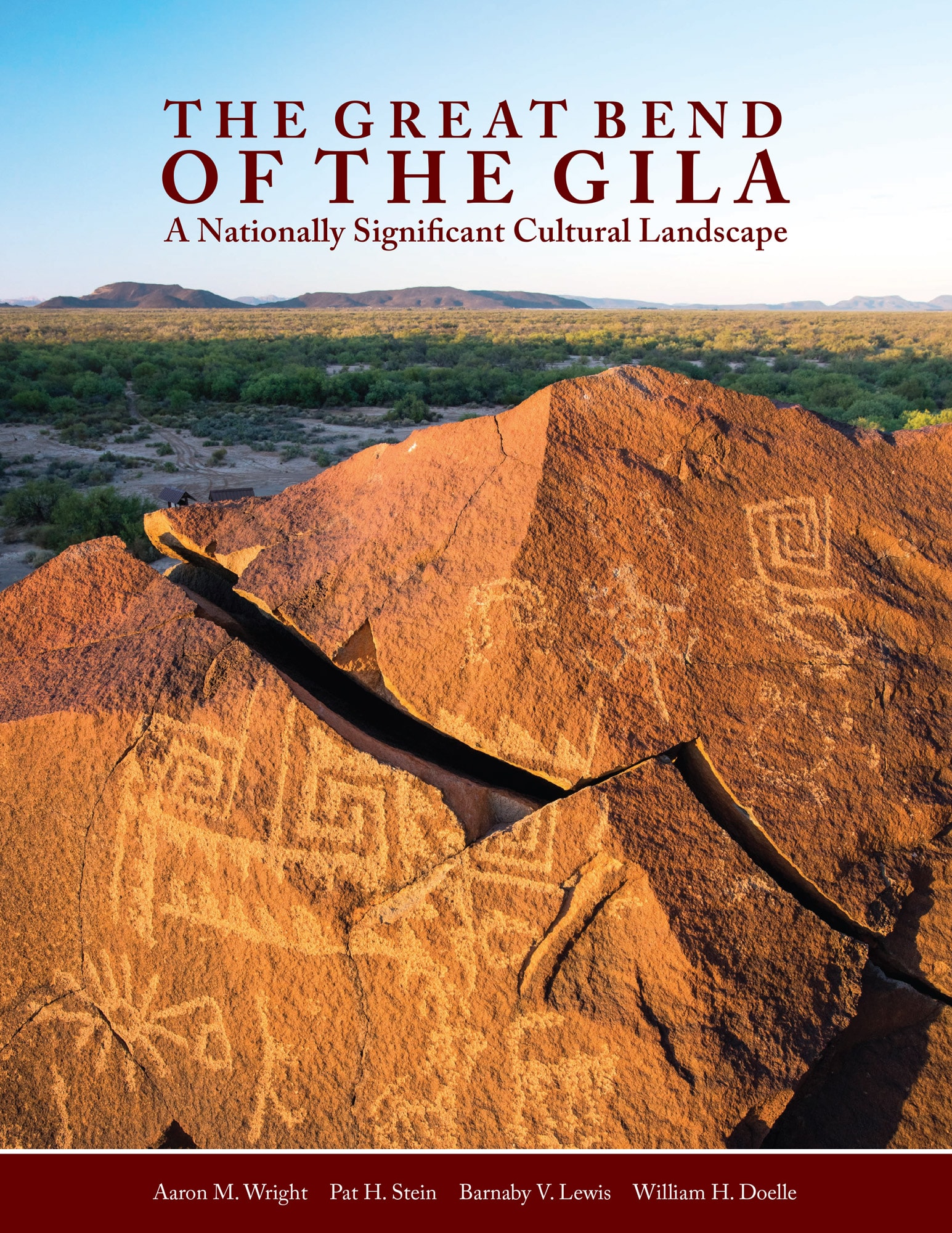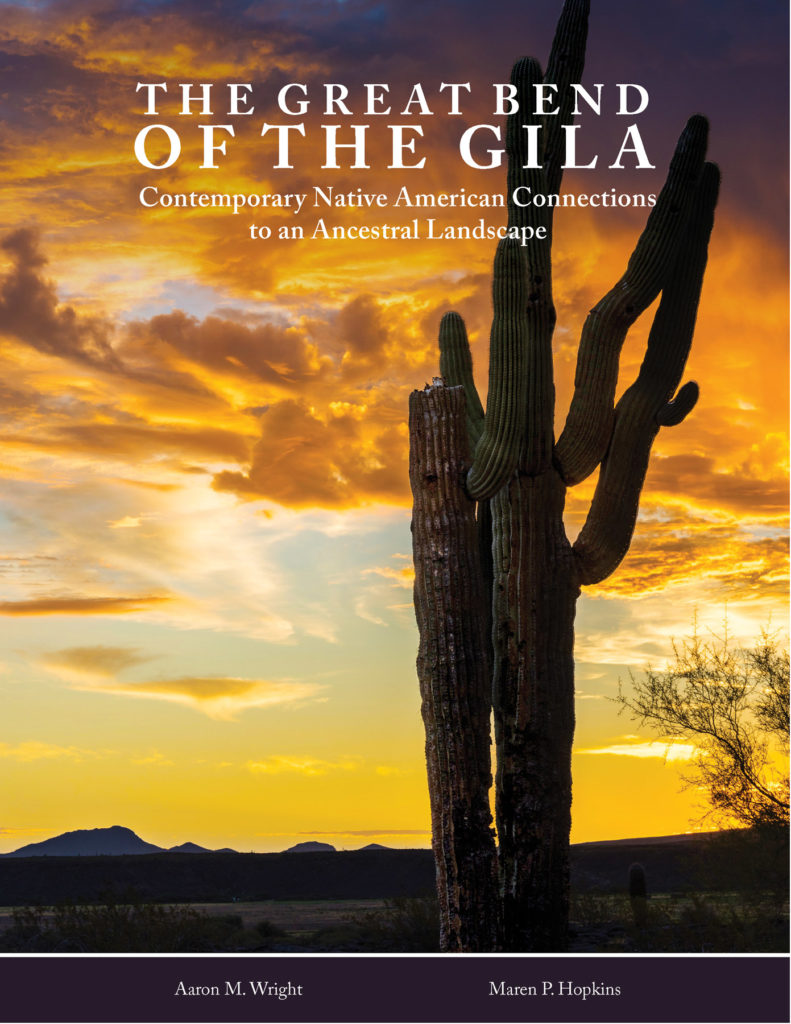For the very latest on the campaign to permanently protect the public lands of the Great Bend of the Gila, visit respectgreatbend.org!
The Great Bend of the Gila is a fragile stretch of river valley and surrounding lands in the Sonoran Desert of southwestern Arizona. This rural landscape is nestled between the cities of Phoenix and Yuma. The Gila River flows through a series of pronounced “bends” here, past jagged mountains and extinct lava flows. It joins the Colorado River just north of the Sea of Cortez.
For millennia, communities flourished along the Great Bend. People from many different walks of life created a cultural landscape that merges archaeological and historical wonders in a remarkable natural setting.
What Is Special about the Great Bend of the Gila?
The Great Bend has long been a crossroads where people of different backgrounds came together in interesting and inspiring ways. This legacy of cultural diversity is literally written on the landscape in the form of tens of thousands of petroglyphs authored by Native Americans, with later additions by Spaniards, Mexicans, and Euro-Americans.
For more than 1,000 years, families lived in villages along the lower Gila River and cultivated ancestral lands. They left a variety of architectural signatures, including pithouses, adobe and stone buildings, ballcourts, and irrigation canals.
The valley later served as an overland route between Spanish settlements in Sonora and missions along the California coast. Father Eusebio Kino blazed this trail in 1699, and Juan Bautista de Anza formalized it in 1775. It served as the foundation for many subsequent transcontinental trails and roads, including Kearny’s trail for the Army of the West, Cooke’s Wagon Road for the Mormon Battalion, and the Butterfield Overland Stage Line. Stage stations and pioneer communities sprang up along these routes. One of these, Stanwix Ranch, was the site of the westernmost skirmish of the Civil War.
Whose Ancestors Lived along the Great Bend of the Gila?
Most of the region’s archaeology attests to agricultural Patayan and Hohokam cultural traditions. These were contemporaneous yet contrasting ways of life that overlapped in the Great Bend area. Over time, those customs merged and diversified, ultimately becoming the Indigenous traditions that continue today. At least 13 federally recognized Tribes have cultural, historical, and ancestral ties to the Great Bend of the Gila.
In the 1860s, pioneers began to settle along the lower Gila River, bringing ranching, commercial farming, and mining. Many families in the towns of Buckeye, Arlington, and Gila Bend are their descendants. These communities also have traditional connections to the Great Bend of the Gila.
How Can We Protect the Great Bend of the Gila?
Signs of the Great Bend’s deep and meaningful history—petroglyphs, geoglyphs, trails—lay bare for all to see. But this visibility is also a vulnerability, and these places are constantly threatened with vandalism, defacement, and outright destruction.
Communities tied to the Great Bend region have long been invested in protecting this landscape, and the collective successes are many. For example, Sears Point, the Painted Rock Petroglyph Site, and the Gillespie Dam Bridge are on the National Register of Historic Places. The Gatlin Site, owned by the town of Gila Bend, is a National Historic Landmark. The Juan Bautista de Anza National Historic Trail, a unit of the National Park Service, passes through the region. And the Maricopa Mountains lining the Great Bend’s east side are part of the Sonoran Desert National Monument.
Although existing protections are encouraging, more are needed. For more than 30 years, Archaeology Southwest has been actively researching and promoting the Great Bend’s history and cultural landscape. We remain committed to working with other organizations, associated Tribes, and local communities to ensure this significant landscape persists for future generations to celebrate.
The Great Bend of the Gila: A Nationally Significant Cultural Landscape
In December 2015, Archaeology Southwest and the National Trust for Historic Preservation released an in-depth study that provides a a historical and Tribal perspective on the significance of the cultural resources and natural landscape encompassed within the Great Bend of the Gila. Download the study (free PDF).

The Great Bend of the Gila: Contemporary Native American Connections to an Ancestral Landscape
In August 2016, Archaeology Southwest released a second study that shares the histories and attitudes that associated Tribal communities hold toward the cultural landscapes of the Great Bend. Tribal communities affirm their connections to these landscapes and their commitments to participating in management and interpretation. Download the study (free PDF).

Details
Related to This
-
File TR2016-101
-
Location Painted Rock Petroglyph Site
-
Culture Pataya
-
Post Life of the Gila